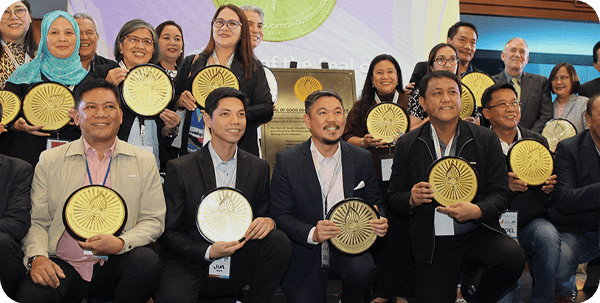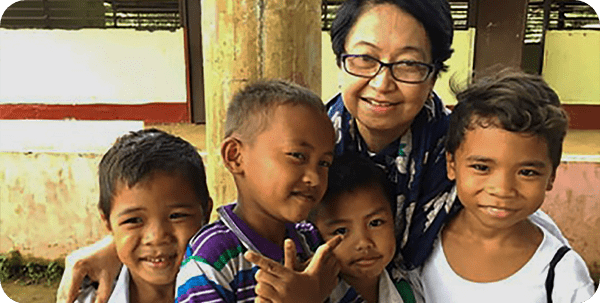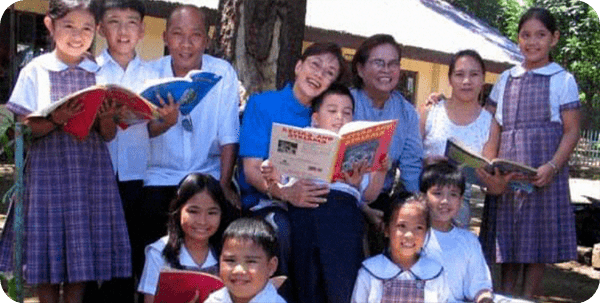KASpaces: Accelerating Progress and Equity in Education
November 22-24, 2021
I will be sharing with everybody what we are doing these past months especially when the pandemic struck.
The Department of Education, the national agency that governs basic education in the Philippines, prescribed a learning continuity plan for us to respond to the challenges brought about by the COVID-19 pandemic, specifically teaching and learning in schools. This directive advised all schools to implement a plan of action to sustain education through the use of learning delivery modalities that are relevant and adapted to current situations in the country.
And with schools doing distance learning, because children cannot leave their homes and go to school physically, teachers have never been more creative and more innovative than ever in using instructional tools and techniques that will ensure that students effectively learn even when they do school at home.
In the division of schools where I come from, the text-based modular learning class is the most preferred modality for learning. It uses home-based modular lessons and limited online class through the use of mobile messaging platforms, like Facebook Messenger. For selected classes that meet virtually from time to time, Zoom, Google Meet, and MS Teams are commonly used.
For us to operationalize these learning modalities, we developed self-learning modules for use in home-based classes because they are the most appropriate instructional tools to use in a remote learning setup which we began implementing last year. This is also the default learning format in our schools this school year. These self-learning modules have been developed using the most essential learning competencies that we call the MELCS, which is like the compressed basic education curriculum that is imperatively done to fit a fair amount of lessons in a school year when time and task learning is limited.
As to how our learning modules are used, our students accomplish tests in the modules on their own with help from their parents who serve as Home Learning Partners. Both students and parents follow a plan of instruction which we call Weekly Home Learning Plan. This is a written plan that indicates which tasks and activities in the modules that students need to complete usually on a weekly basis. Our teachers, on the other hand, provide direction and guidance to their students in using these learning modules. Teachers also check and analyze results of the students’ performance in the accomplished tasks and activities for necessary interventions and actions, especially for students who may find some lessons very difficult.
The modules were designed using self-instruction techniques, so our students can use them with little to no assistance from Home Learning Partners. Some of the teaching techniques that were incorporated in the development of these modules were directed instruction, inquiry-based and discovery learning model, project-based learning tasks, differentiated instruction, and meta-cognitive learning. There is also a provision for learning tasks and formative assessment which are necessary for teachers to know whether learning actually takes place. The self-learning modules are also arranged in a way children can follow them very effectively. Each module has a pre-test and post-test for the student to take for formative assessment. The students’ scores for the pre-test and post-test are used by teachers to identify which group of students need reinforcement and enrichment.
There are also activities in the modules that allow for a review of a previous lesson or integration of a related competency with the target topic. The lessons are presented in a very interesting way to capture the interest of the students when they accomplish the modules. Explicit discussion of the topic is usually provided so that students can clearly understand concepts and, when examples are necessary, they are also provided to help students process lessons more successfully.
Teachers supplement their classes with other online activities by using mostly digital platforms, since they are very applicable in the virtual classrooms, like Hoot, Quizzes. They are usually preferred by both teachers and students because learning can be interactive and fun. The Google Jamboard is also used when the class requires student collaboration. These are the resources and strategies that we are using to adapt to the changes in the manner of teaching and learning in light of the global health emergency.
Noticeably, they are driven by three factors – accessibility, technology, and reliability to effect learning in a remote classroom setting. It can also be noted that even though innovations have been made in the teaching tools and approaches to suit the distance learning classroom, some teaching methods and practices that we used before the pandemic are still used when they are relevant. This is most apparent in classroom situations that still require common instructional strategies, like beginning the lesson through motivation activities, guided instruction, inquiry-based learning, question-and-answer lessons after the discussion, doing practice exercises, and others that have been proven to be effective approaches to teaching and learning that transcend diverse learning delivery modalities.
We should not leave our learning practices to certain prescribed teaching tools and approaches because they are the latest trends in education. It is more helpful to diversify our pedagogical techniques by combining the innovative and unconventional approaches with traditional and common classroom practices, just as we do for common instruction in our school division.
Nick Toong: Do you have to upskill the teachers to be able to deal with whatever teaching situation in the last two years?
JC: Definitely, it is a must. Remember that everybody was in shock when the pandemic struck. Early in March or February last year. And so, with the upgrades, the changes in how we do teaching in the classroom, definitely, our teachers need to be retooled or upskilled to be able to adapt their proficiencies to the learning situations that got around, especially in the Philippines because this is really something new for almost everybody. For some cases, distance learning, modular lessons, are learning modalities that are less familiar to most teachers in the Philippines and for us to cope with these changes, the appropriate learning and development activities need to be carried out to help our teachers be retooled and upskilled in their professional proficiencies.
NT: Does innovation in teaching always have to involve technology? Can it come in other forms?
JC: For most innovations in the classrooms nowadays, the potential of technology has always been tapped but my advice is it should not be the case all the time, especially in the Philippines where you talk about technology, the concern and issue of financial resources will have to be considered. There are still places in the country without access or poor access to Internet facilities. As long as our teachers are able to reinvent their effective practices in the classroom and as long as what they do in the classroom brings in positive learning outcomes, these learning and teaching tools and approaches can still be considered innovative or even inventive without incorporating technology. Then again, it would be better that our teachers would be able to have access to a lot of technologies but for situations where technology is not very much available, it is just a matter of being creative in our teaching tasks. We can already innovate in our classroom practices.
NT: Can the use of self-instruction materials really enhance learning? How can you know if the students really did them by themselves and not that a brother or sister or other family member helped them?
JC: I believe that any initiative that we undertake or carry out for the purpose of teaching and learning will already do good for providing education to our students. I mentioned earlier that, in the Philippines, we are very much into modular classrooms and that these are the default learning delivery modality in most schools in the country.
For us to be able to implement this classroom in the New Normal, one effective way in this kind of learning environment that everyone is experiencing right now is to do self learning, since our teachers can’t be physically present for the students because of the threats of the virus and so we resort to doing self-instructional classes by way of self-learning modules that we issue to our students.
Currently, we are piloting face-to-face classes in selected schools in the Philippines to prepare ourselves for the gradual return to the “Old Normal” and, with these preparations, our teachers should prepare themselves mentally, emotionally, and professionally for the kind of classroom setup that will take place in a post-COVID world. There will definitely be new policies in the implementation of the curriculum of instruction to help societies adapt to an environment that is vulnerable, uncertain, complex, and ambiguous (VUCA).
The pandemic has revealed the many frailties of the system of education that we used to know and experiences that we have encountered. While we struggle to use different teaching tools and approaches to sustain education of children in the middle of a pandemic, this should point us to creating a classroom that will be resilient to any interruption.
Schools of the future will use hybrid classroom modalities and so more instructional technologies will be prescribed in the classroom to make learning more holistic. Essential learning competencies will make up a curriculum that is more relevant and more compact thereby decongesting the instruction of unnecessary lessons.
With all these education reforms, teacher proficiencies must be upgraded because the teachers are the front liners in implementing all these policies and programs. Definitely, we need to adapt our instructional methodologies to the kind of classroom that could be somehow be the same as before the pandemic struck, but a kind of classroom that will be hybrid and more holistic and, in doing so, we should always put the abilities and interests of the learners at the center of our pursued upgrade and innovate our teaching skills as teachers.




